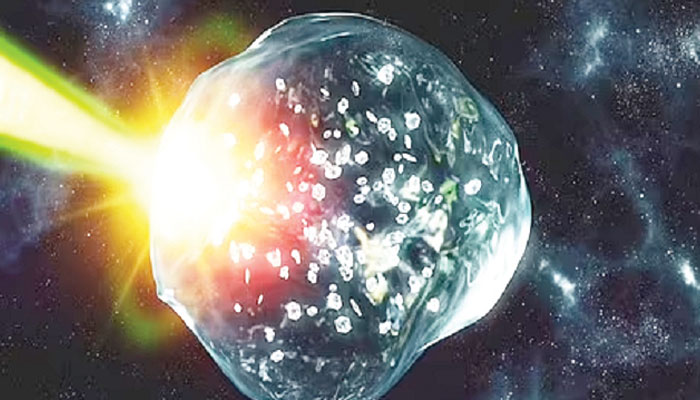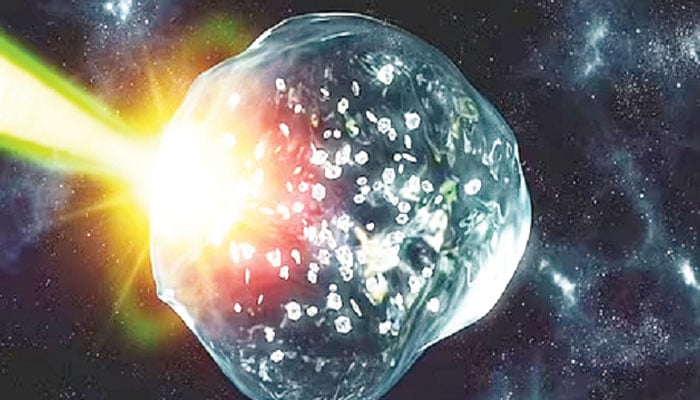
Researchers at the SLCA National Accelerator Laboratory in the US state of California were trying to replicate the diamond rain process that occurs in the solar system’s planets Uranus and Neptune. In this regard, he has discovered the method of making diamonds from plastic bottles. With the help of modern technology, it will now be possible to help prevent waste by turning plastic waste into fine diamonds.
Because the temperature of these ice balls is very low compared to the Earth’s atmosphere and the pressure is millions of times higher. These factors are therefore believed to break down the hydrocarbon compounds and then the intense pressure transforms the carbon into diamonds which then fall out as rain. To mimic this process, the scientists hit a very powerful laser on polyethylene terephthalate (PET) plastic, which they saw forming a diamond-like structure.
It is a hydrocarbon material commonly used in single-use packaging. Dominik Cross, a physicist and professor at the University of Rostock, says PET plastic has the perfect balance of carbon, hydrogen and oxygen to mimic the activity on these ice planets.
Scientists know that compounds made of hydrogen and carbon exist 8,046 kilometers below the surface of Uranus and Neptune. These compounds include methane, which has four hydrogen atoms attached to one carbon. This is why Neptune appears blue.
setTimeout(function(){
!function(f,b,e,v,n,t,s)
{if(f.fbq)return;n=f.fbq=function(){n.callMethod?
n.callMethod.apply(n,arguments):n.queue.push(arguments)};
if(!f._fbq)f._fbq=n;n.push=n;n.loaded=!0;n.version=’2.0′;
n.queue=[];t=b.createElement(e);t.async=!0;
t.src=v;s=b.getElementsByTagName(e)[0];
s.parentNode.insertBefore(t,s)}(window,document,’script’,
‘https://connect.facebook.net/en_US/fbevents.js’);
fbq(‘init’, ‘836181349842357’);
fbq(‘track’, ‘PageView’);
}, 6000);
/*setTimeout(function(){
(function (d, s, id) {
var js, fjs = d.getElementsByTagName(s)[0];
if (d.getElementById(id)) return;
js = d.createElement(s);
js.id = id;
js.src = “//connect.facebook.net/en_US/sdk.js#xfbml=1&version=v2.11&appId=580305968816694”;
fjs.parentNode.insertBefore(js, fjs);
}(document, ‘script’, ‘facebook-jssdk’));
}, 4000);*/



